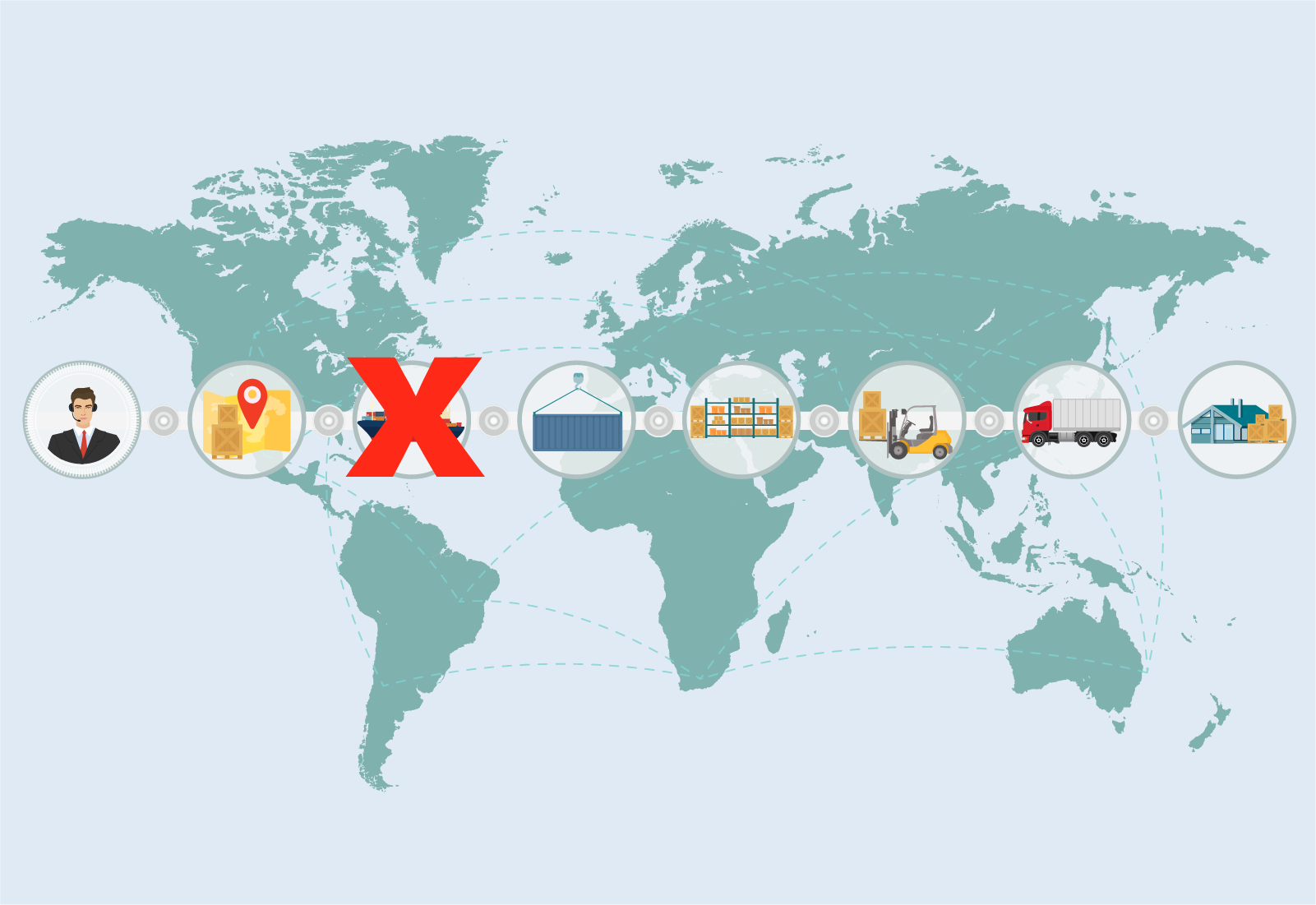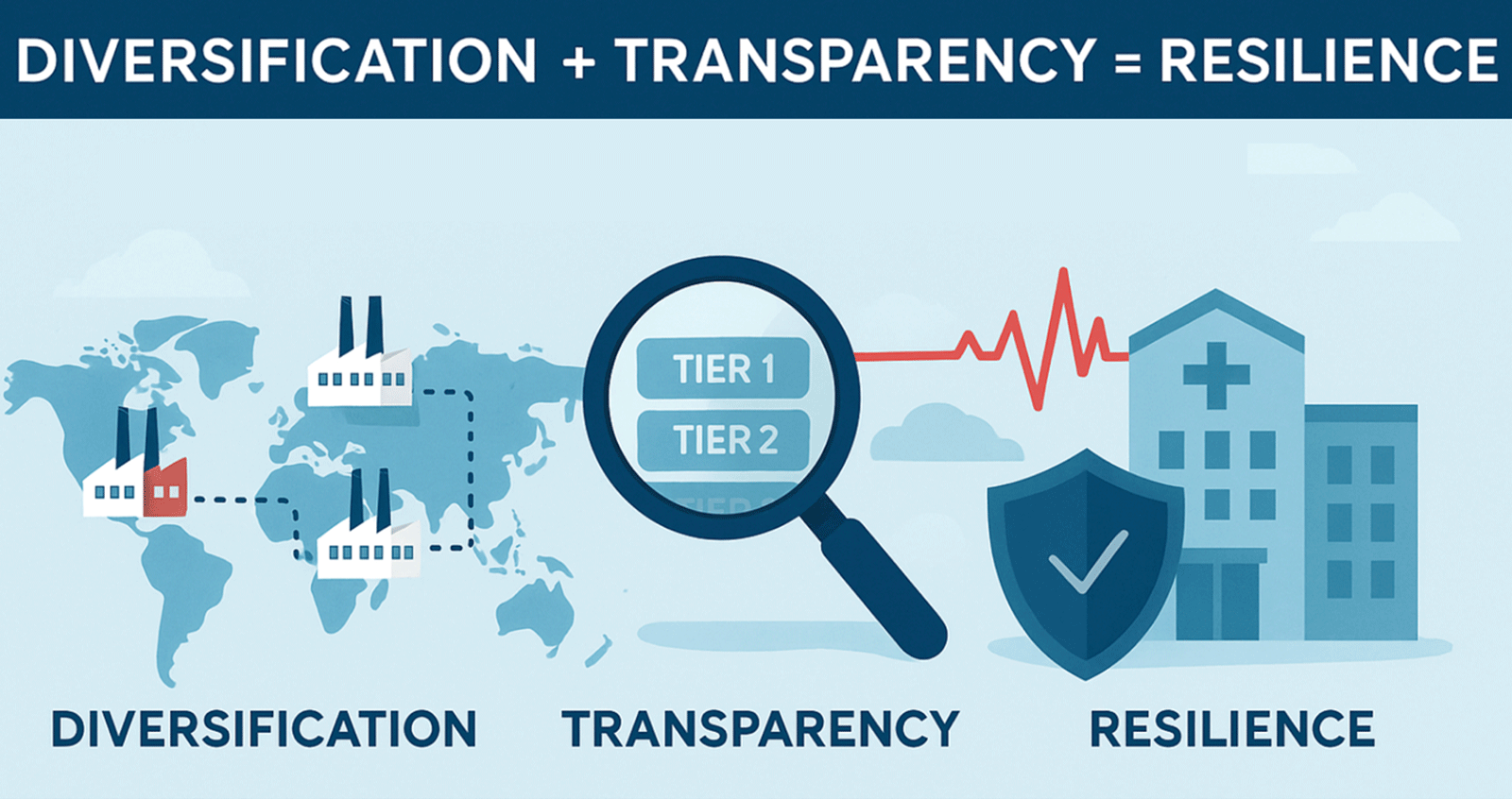
In previous blogs, we've explored the foundations of healthcare supply chain resilience—from preparedness drills and risk assessments to financial agility. In this installment, we focus on a critical pillar of long-term stability: supplier diversification.
Simply put, placing all your supply chain eggs in one vendor’s basket isn’t just risky—it’s potentially catastrophic. The COVID-19 pandemic made this painfully clear: hospitals overly reliant on a single supplier or geographic region faced severe shortages, inflated costs, and delayed care. Diversification, paired with radical transparency from raw materials through final delivery, is no longer optional—it’s essential to supply chain resilience in healthcare.
The Risks of Single-Vendor Reliance
Healthcare supply chains have traditionally prioritized efficiency and cost reduction. While these goals are important, they’ve often led to overdependence on single vendors or regions. This introduces several critical vulnerabilities:
- Limited Agility – Organizations dependent on one vendor struggle to pivot quickly when disruptions occur, delaying access to alternatives.
- Cost Volatility – Sole-source vendors can impose surge pricing during shortages, leading to unplanned budget overruns.
- Geopolitical Exposure – Suppliers concentrated in politically unstable or disaster-prone regions expose hospitals to unpredictable disruptions.
Quality Risks – A single quality failure can cascade across the entire system, jeopardizing patient safety and regulatory compliance.

The Crucial Role of Transparency
Diversification alone isn’t enough. Without transparency, it’s impossible to assess risk, anticipate all of the various impacts of disruptions, or make informed decisions. True resilience requires visibility across every tier of the supply chain.
Transparent supply chains enable:
- Traceability – Visibility into country of origin, raw material sourcing, and manufacturing processes.
- Risk Mitigation – Early detection of threats tied to geopolitical shifts, tariffs, compliance issues, etc.
- Ethical Compliance – Ensuring that suppliers meet labor, environmental, and quality standards protects patients and brand reputation.
- Negotiation Leverage – Data-backed insights that support fair pricing and reduce exposure to sudden cost increases.
Best Practices for Supplier Diversification and Transparency
- Digitally Map Your Supply Chain Thoroughly – Identify primary, secondary, and tertiary suppliers for critical SKUs. Go beyond Tier 1 to uncover hidden dependencies and geographic concentrations.
- Adopt Multi-Supplier Strategies – Maintain contracts with multiple pre-qualified vendors. Even if one offers better pricing, ensure others are tested and ready to activate during disruptions.
- Implement Robust Supplier Risk Assessments – Evaluate suppliers across (at least) the following key dimensions:
- Country of Origin Risks – Political, environmental, and regulatory exposure.
- Production Processes – Quality control, sustainability, and compliance.
- Financial Stability – Ability to withstand economic shocks.
- Crisis Preparedness – Existence of contingency plans and business continuity protocols.
- Leverage Technology for Real-Time Visibility – Use AI, blockchain, and IoT platforms to monitor inventory, transit conditions, and supplier performance. Real-time data enables proactive risk management.
- Create Collaborative Transparency Agreements – Require suppliers to disclose sourcing data, production sites, and risk indicators. Formal agreements foster accountability and build trust across the network.
- Conduct Scenario-Based Supplier Exercises – Simulate disruptions involving key suppliers—pandemics, cyberattacks, trade restrictions, etc.—and test your response. These drills validate contingency plans and expose gaps before real crises occur.
Real-Life Impact: Diversification in Action
- Hurricane Maria Impact on Puerto Rico (2017) – Medical device and pharmaceutical manufacturers with diversified production sites outside Puerto Rico were able to maintain supply continuity, while others faced months-long disruptions.
- IV Solution Shortage (2017) – Hospitals with diversified supplier networks reduced back-orders by over 50% compared to those relying on a single vendor.
- PPE Crisis (2020) – Health systems with transparent, multi-supplier strategies adapted faster, sourced alternatives more effectively, and controlled cost spikes.
- COVID-19 Vaccine Procurement (2021) – Countries and health systems that diversified vaccine sources (e.g., Pfizer, Moderna, AstraZeneca, Sinovac) achieved faster and broader immunization coverage, avoiding delays from single-manufacturer bottlenecks.
- Contrast Media Shortage (2022) – Hospitals that sourced iodinated contrast agents from multiple global suppliers could maintain imaging services during the GE Healthcare Shanghai plant shutdown, while others faced diagnostic delays.
Generic Drug Supply Disruptions (Ongoing) – Health systems that partnered with multiple generic manufacturers or participated in nonprofit drug initiatives (e.g., Civica Rx) experienced fewer shortages of essential medications like antibiotics and anesthetics.

The Bottom Line: Diversification + Transparency = Resilience
Healthcare supply chain resilience isn’t built on efficiency alone. It requires a strategic blend of supplier diversification and radical transparency. Together, they form a supply chain that can absorb shocks, protect patient care, and stabilize financial performance. The era of single-vendor dependency is over. By embracing a diversified, transparent approach—from raw materials to final delivery—healthcare organizations can build supply chains that are not only resilient but unbreakable.
Article Series: "Building Unbreakable Healthcare Supply Chains"
- What is Healthcare Supply Chain Resilience?
- Why Consistent Supply Chain Resilience Assessments Are Vital
- Financial Resilience—Protecting Your Healthcare Organizations from Cost Shocks
- Supplier Diversification—Why Relying on One Vendor Isn’t Wise
- Technology & AI—The Future of Resilient Healthcare Supply Chains
- Climate Change & Supply Chain Risk—What Healthcare Organizations Must Do Now
- Staff Training & Culture—The Human Side of Supply Chain Resilience
- The ROI of Resilience—How Prepared Healthcare Organizations Save Millions
Request a Complimentary Supply Chain Resilience Assessment
For a limited time, BlueBin offers a complimentary supply chain resilience assessment for healthcare organizations, including acute and non-acute facilities, to evaluate their resilience framework against industry-leading practices.
